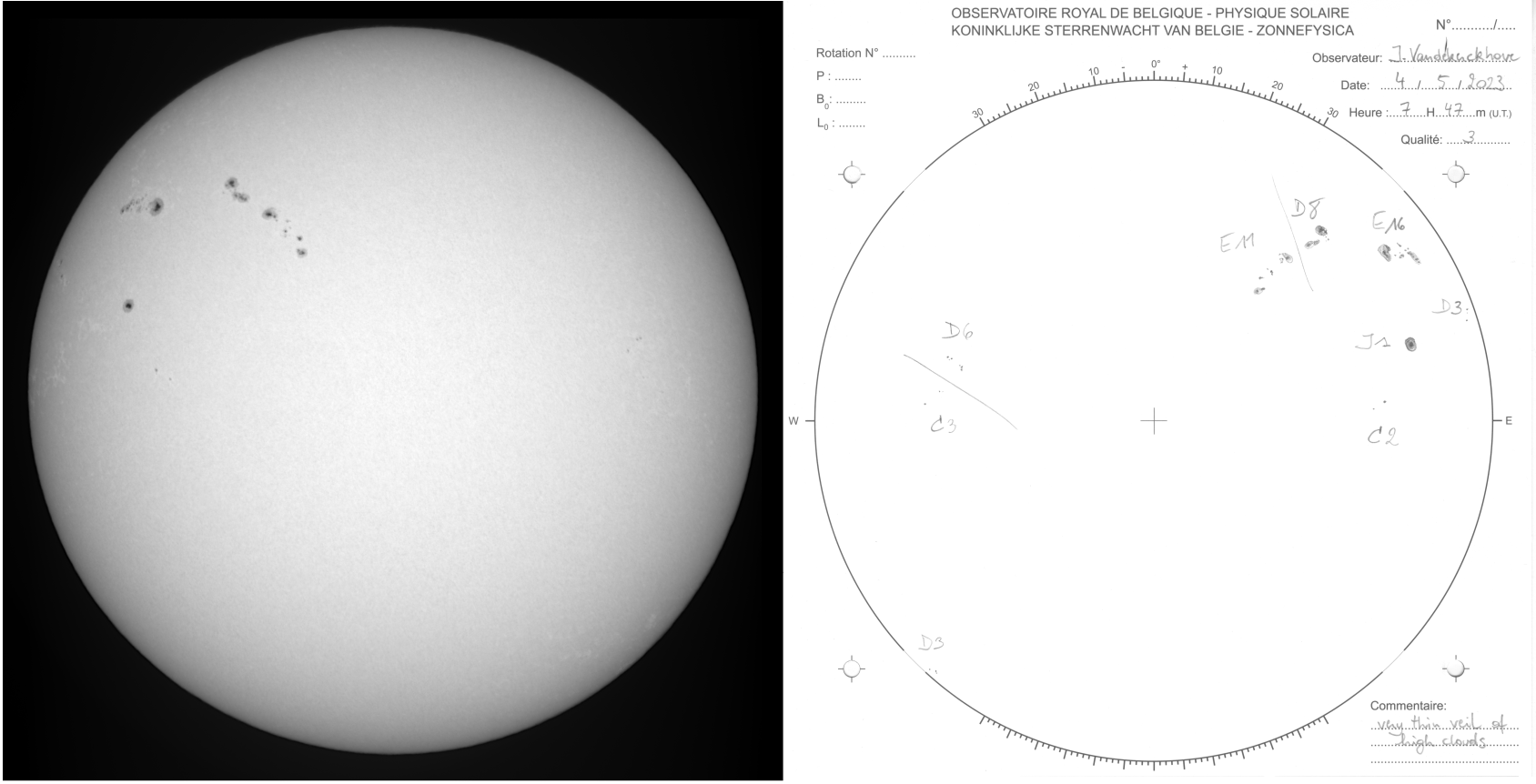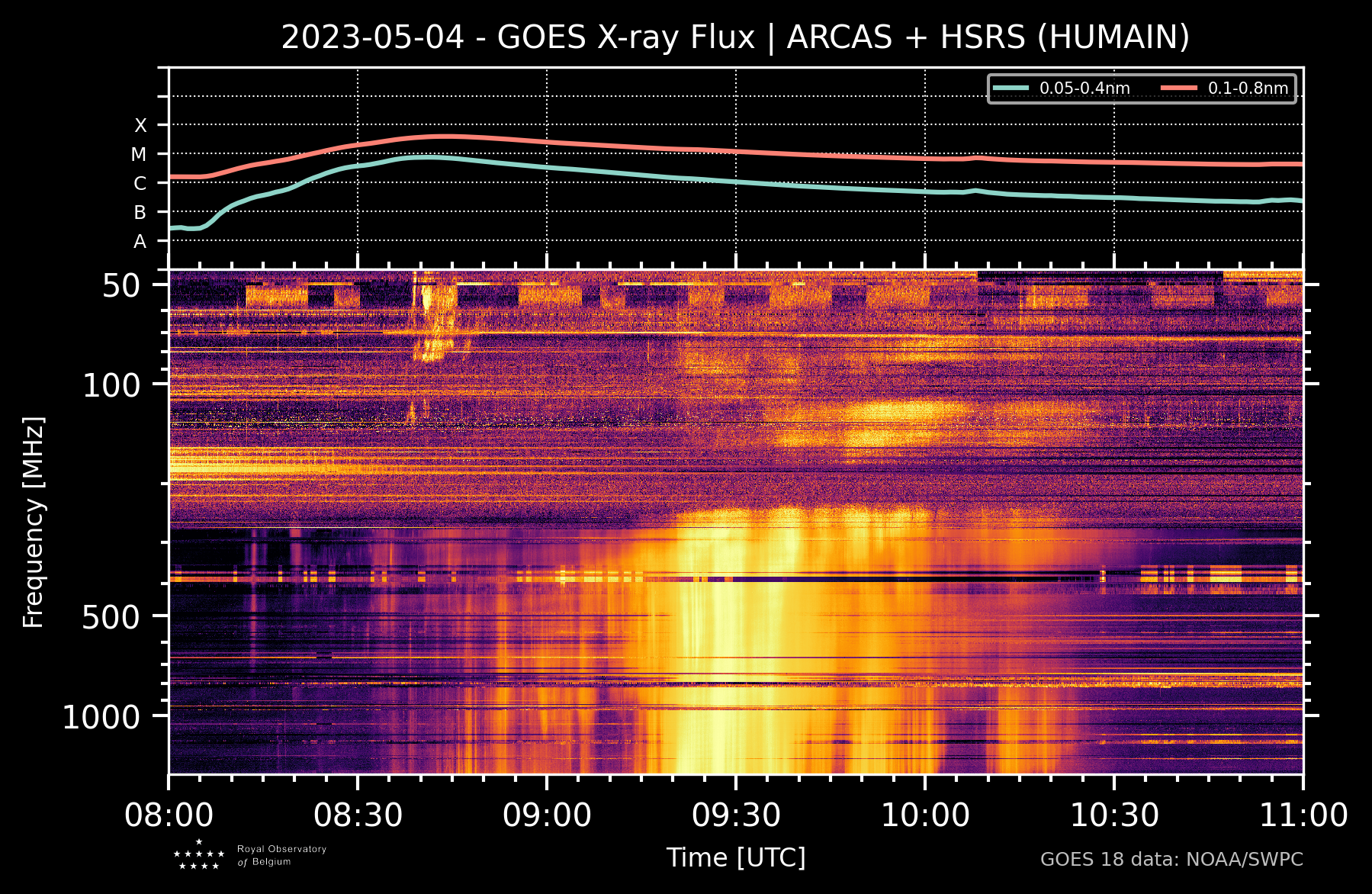Context
Between May 3rd and May 5th 2023, the Sun produced several M-class flares. Ground based observations of solar activity is always a tricky business as it depends on the observing conditions (night/day cycle, seeing) and on the instruments status. On May 3rd, the weather was nice and the USET optical telescopes in Brussels could observe in favourable conditions what happened on that day. The Humain station, in the south of Belgium, was unfortunately out of electricity due to a power outage.
On May 5th, at the start of the automated observations in Humain, a large type IV event was observed with the radio instrumentation while a thick layer of clouds prevented optical observations to take place in Brussels.
On the other hand, May 4th was a good day for both Belgian stations, and the M3.9 flare of that day, peaking at 08:44 UT, was observed at lengths in optics and radio. The flare took place in NOAA AR103296, visible in white light as a complex sunspot group (Dai class according to the McIntosh classification). The region was well visible in white light and in the hand drawing made with the USET telescopes (figure 1). The flaring region is labelled D8 on the drawing.

The radio and chromospheric event
In radio, the flare was accompanied by rather classical signatures of non thermal electrons : metric and decimetric type III bursts, shock signatures below 100 MHz (type II burst), and a broadband, 2-hours long type IV burst (see figure 2). The type IV burst was rather intense in the upper VHF band, about 300 times the quiet sun level and moderately strong in L band (about 200 times). As often seen in type IV, the peak of the radio emission took place nearly an hour after the peak of the GOES flare. Fine structures made of pulsations, spikes and fiber bursts are seen in the L band part of the burst (see here a high resolution example of the spectrum).

The movies recorded in H-alpha and Ca-IIK show bright ribbons on top of NOAA AR103296, interpreted as the location in the chromosphere where part of the flare energy is deposited. These ribbons correspond to the lower part of the coronal magnetic field structure involved with the flare and they move as the flare expand.
Halpha movie (1min cadence) Video file
| Ca-IIK movie (1min cadence) Video file
|
Contact & information
Data from USET and Humain are freely available for scientific and education purposes. Please check the USET and Humain websites for more information.